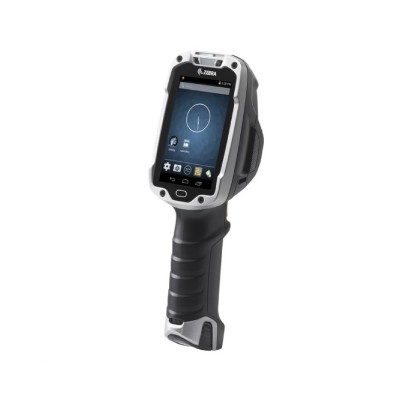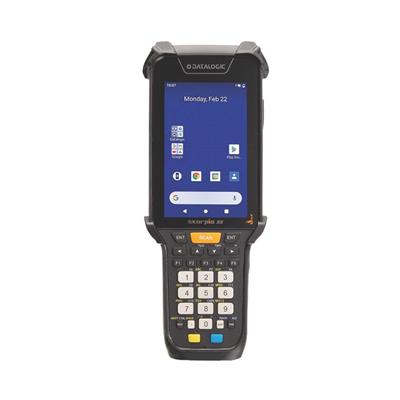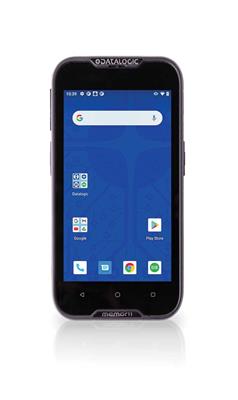How to choose a mobile device?
 Offering flexibility, productivity, ease of use and real-time information, mobile terminals are indispensable for many tasks related to mobility such as e-commerce, warehouse management, technical interventions in the field and mobile traceability in general.
Offering flexibility, productivity, ease of use and real-time information, mobile terminals are indispensable for many tasks related to mobility such as e-commerce, warehouse management, technical interventions in the field and mobile traceability in general. This is why you find today a wide range of devices and accessories from which you have to make your choice, depending on what best suits your applications.
What are the objective criteria that should allow you to choose a mobile terminal?
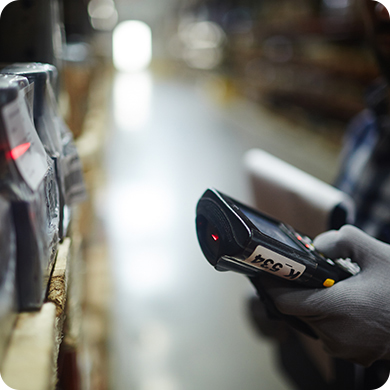
- Working environment: temperature, humidity, dust, steam, risk of falling or shocks?
- User interface: normal or touch screen, numeric or alphanumeric keypads, voice command, hands-free reading, in-vehicle equipment
- Autonomy of operation, power supply and/or data download bases
- Platforms: wired or wireless, operating system, types of barcodes to be read (one or two dimensional), read distance/resolution, RFID reading and/or recording
Categories of mobile terminals
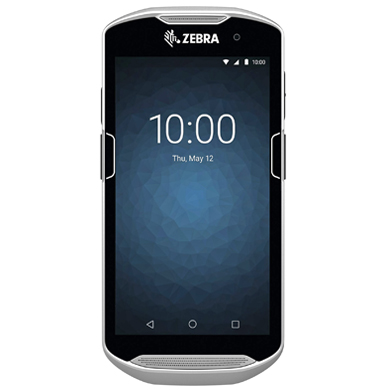 This equipment can be divided into several categories, namely
This equipment can be divided into several categories, namely Batch processing equipment: this is equipment that allows off-line data capture. For uses that do not require real-time information (inventories and basic traceability), they are generally light and you must necessarily place them on their base to exchange data with the PC or your ERP as well as to recharge the batteries.
Barcode scanner and data capture: robust equipment designed for online work (via WIFI, WLAN, Bluetooth) that can include a barcode and/or RFID reader, computer, telephony, GPS location and ERP access on the same terminal. The range is very wide and offers all kinds of options, reading technologies other than those mentioned, to adapt to particularly demanding environments.
Portable terminals: similar to the previous ones, but with a handle and trigger facilitating one-handed operation, generally very robust and useful in batch and/or wireless environments, long-distance readings, etc.
Hands-free devices (where possible): similar to previous terminals, but with the possibility of carrying a mini-reader and a device on the operator's wrist or belt, leaving both hands available for handling. (Receiving, shipping and picking in general).
On-board or transportable terminals: useful for trucks and vehicles in general (receptions, shipments, warehouses in general). They are powered by the vehicle, they are particularly resistant to vibrations and risks of loading and do not have the reader incorporated.
Operating systems
 Windows CE: high-performance and flexible, preferred by developers, with a vast library of traceability and point-of-sale applications, with precautions to be taken regarding the compatibility of the different versions.
Windows CE: high-performance and flexible, preferred by developers, with a vast library of traceability and point-of-sale applications, with precautions to be taken regarding the compatibility of the different versions. Windows Mobile: the most common in mobility, different from the previous one, powerful for voice communications, but more expensive and more resource-consuming than the previous one.
Android OS: the latest generation in full development today.
Wireless connectivity
If it is not permanent: the data is stored in the terminal and regularly updated when it is placed in the loading and data exchange database.
Wifi (IEEE 802.11 wireless standard): the most common in logistics, industrial and service environments where they cover all types of peripherals at the local level.
GPRS (wide area network): the technology used in telephony facilitates connection at the global level. Pay attention to compatibilities for efficient global management.
Bluetooth: very useful because it does not require any infrastructure, it is Plug & Play but works only in a restricted area (20 meters).
GPS (Global Positioning System): it is a passive system that, associated with the WAN, allows the geolocation of events and / or people or vehicles.
Types of scanner
 Laser : The most common nowadays, allow the reading with a red diode by reflection. They allow a linear reading of the barcode up to 70 cm. There are omnidirectional and long range versions with readings up to 8-10 meters.
Laser : The most common nowadays, allow the reading with a red diode by reflection. They allow a linear reading of the barcode up to 70 cm. There are omnidirectional and long range versions with readings up to 8-10 meters.Imager: operate on the basis of photographic image capture. They are omnidirectional, uniform and two-dimensional (QR and Datamatrix). They read data on most colored backgrounds and reach up to 8-10 meters.
Do you need advice on choosing your product? Call our specialists at +32 (0)4 224 99 99, from Monday to Friday from 8:30 am to 5:00 pm.
Best-selling mobile devices
Zebra TC8300 2D handheld data collection terminal - extended distanceBT - Wi-Fi - Android
Item No. 20799219
€ 3.494,72
Add to cart
€ 645,34
Add to cart
Zebra TC58 - portable data collection terminal - 5G - Wifi 6E - Bt -2D - imager SE5500 - camera -
Item No. N0423822
€ 2.864,85
Add to cart
Datalogic Memor 11- lecteur 2D - USB-C -Wi-Fi - kit USB - incl.: cable (USB) - hand-strap
Item No. N0470305
€ 1.093,00
Add to cart





